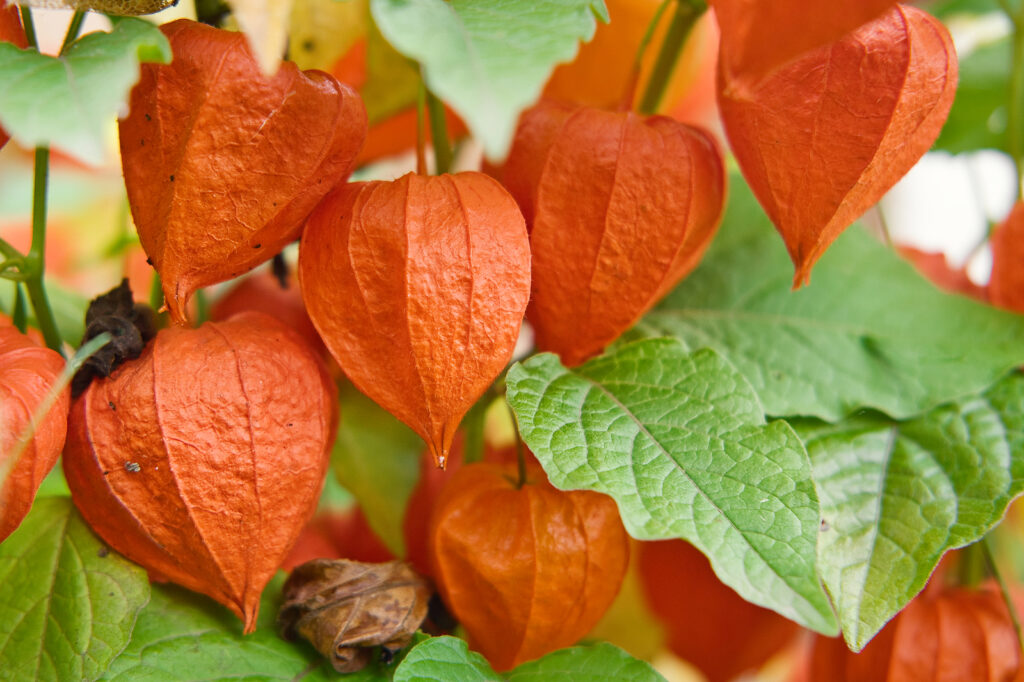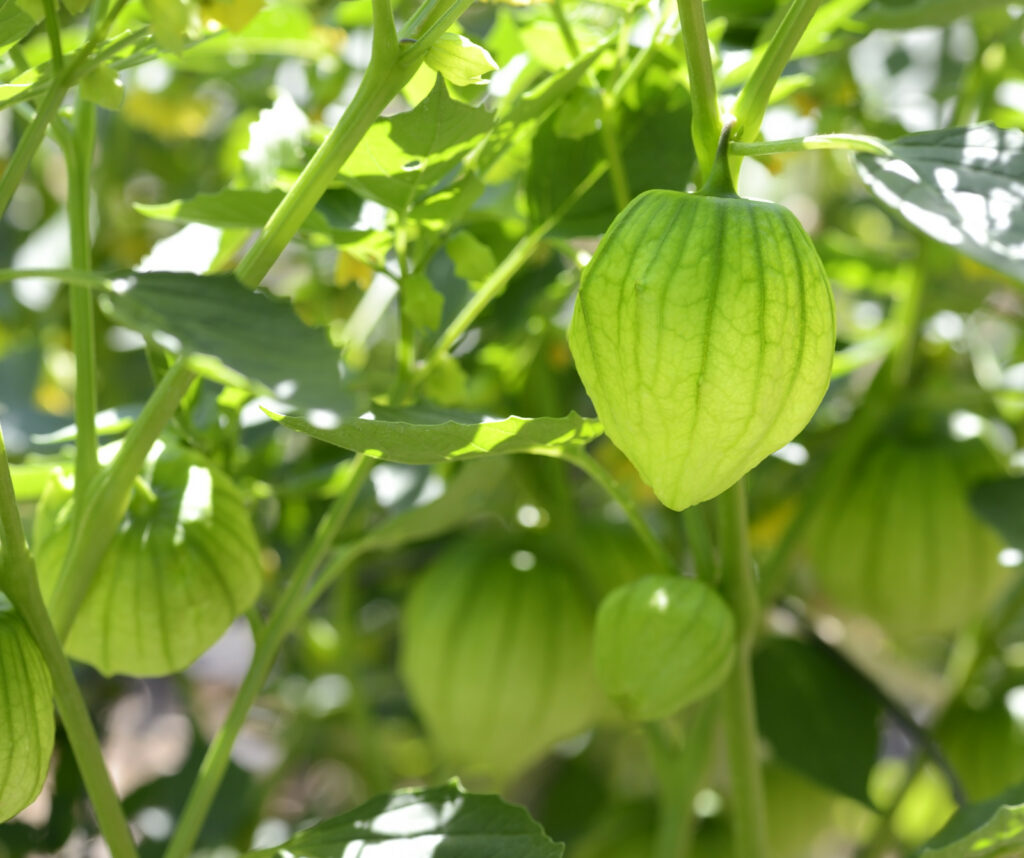Physalis–commonly called ground cherry or Chinese lantern–is a rhizomatous perennial that bears inconspicuous yellow flowers that are followed by spherical red, yellow, or purple berries that are enclosed in decorative, paper lantern-like calyces.
Physalis alkekengi known as Chinese lantern is a perennial cultivated for its decorative flowers. Physalis ixocarpa is an annual commonly known as tomatillo; it is cultivated for its husk-covered fruit that is often used in salsas and curries.
Physalis has triangular to diamond-shaped leaves to 5 inches long. Physalis are bushy often sprawling plants. Perennial Physalis can is hardy to Zone 3 but will die back to the ground after the first freeze.
Physalis is a genus of about 80 species of busy annuals and perennials native to the Americas.
Get to know Physalis – Ground Cherry
- Plant type: Rhizomatous perennial
- Growing zones and range: Zones 8-11
- Hardiness: Not frost hardy
- Height and width: 24 to 36 inches tall and 24 inches wide
- Foliage: Rounded, arrow-shaped leaves
- Flowers: Bell-shaped flowers with star-shaped mouths appear singly, sometimes in small clusters
- Bloom time: Summer
- Uses: Border, vegetable garden
- Common name: Chinese latern, Japanese lantern, tomatillo, ground cherry
- Botanical name: Physalis
- Family name: Solanaceae
- Origin: Americas

Where to plant Physalis – Ground Cherry
- Plant Physalis in full sun.
- Plant Physalis in humus-rich, well-drained soil.
- Plants spread quickly by rhizomes and can become invasive.
When to plant Physalis – Ground Cherry
- Set container-grown Physalis in the garden after the last spring frost.
Planting and spacing Physalis – Ground Cherry
- Space Physalis 24 to 36 inches apart.
How to water and feed Physalis – Ground Cherry
- Water Physalis to keep the soil evening moist. Water during dry weather to keep plants growing evenly.
- Fertilize Physalis with an all-purpose, organic fertilizer in spring.

Physalis care – Ground Cherry
- Cut stems for drying as the calyces begin to color.
- Contact with Physalis foliage can cause skin irritation.
Physalis pests and diseases – Ground Cherry
- Physalis can be attacked by rust, white smut, and Cercospora leaf spot.
- Caterpillars can attack Physalis.
Physalis propagation – Ground Cherry
- Sow seed of perennials in containers in a cold frame in spring.
- Sow seed of annuals in the garden in midspring.
- Divide perennials in spring.
Physalis – Ground Cherry varieties to grow
- Physalis alkekengi, Chinese lantern, Japanese lantern. Rhizomatous perenial grows to 30 inches tall and 36 inches wid; nodding bell-shaped cream-colored flower with star-shaped mouths; flowers appear from leaf axils in midsummer; bright orange-scarlet berries follow flowers; triangular-ovate shaped leaves.
- P. ixocarpa, tomatillo. Frost-tender annual; bears small yellow flowers with purple markings followed by small, green fruits enclose in a yellow-purple bladder-like calyx; fruits are grown in vegetbable gardens; dark to midgreen compound leaves.















